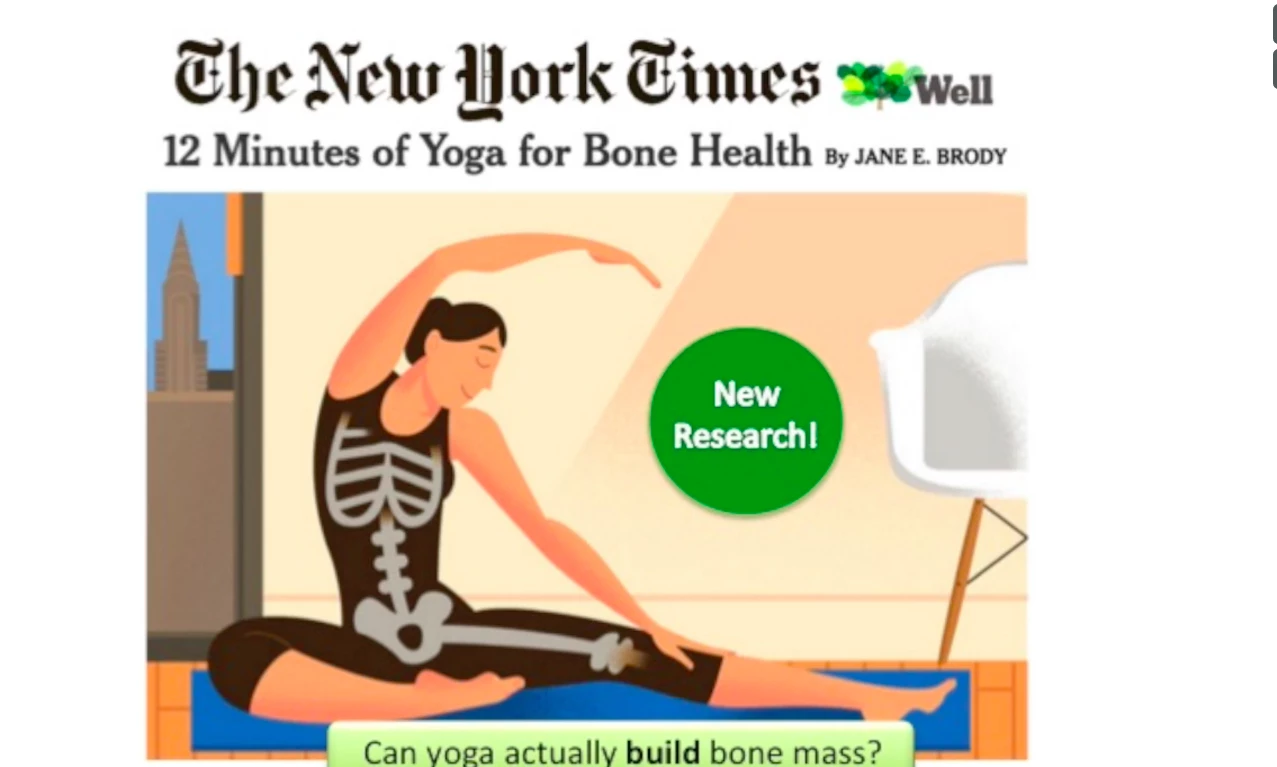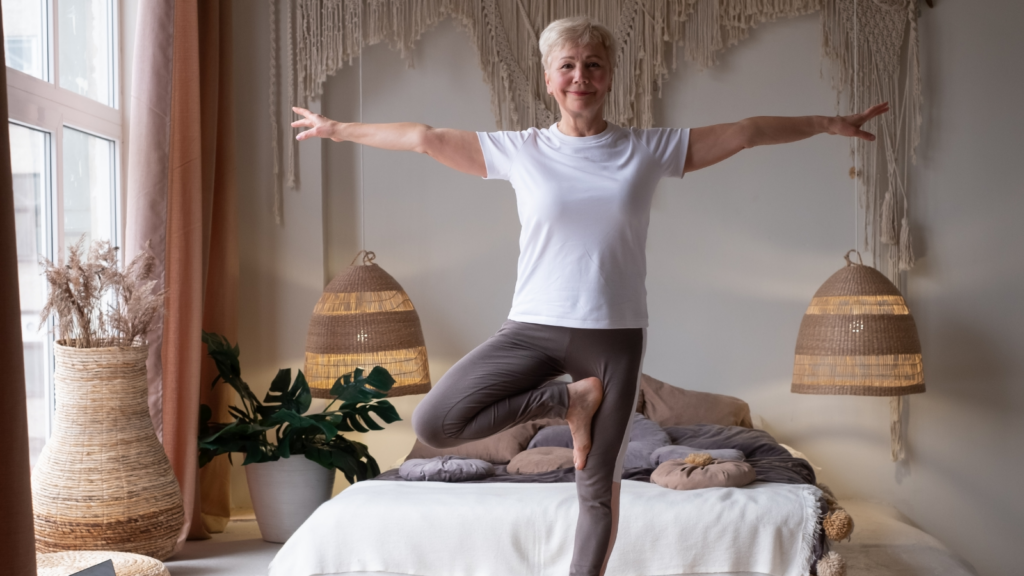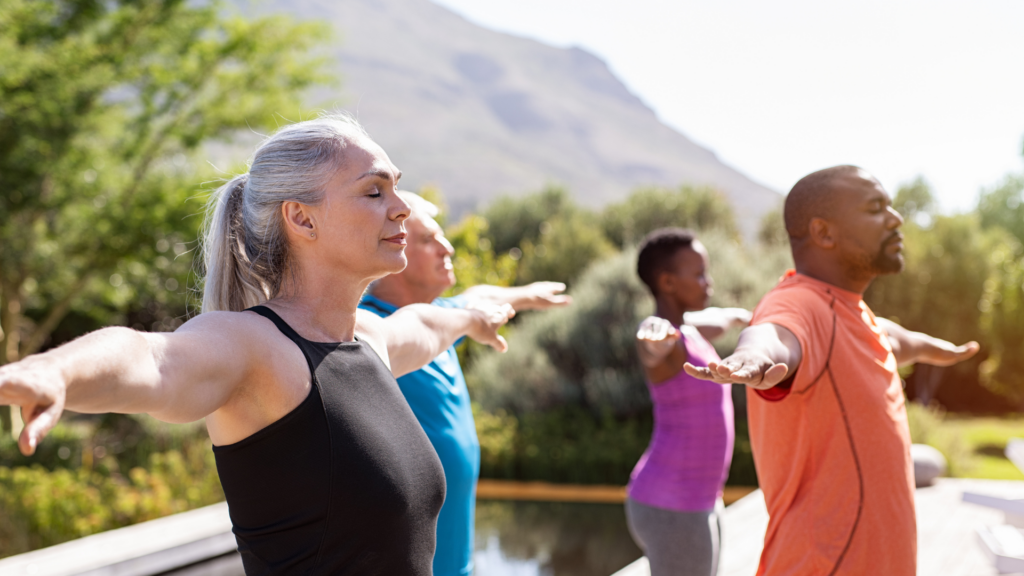Study Indicates Yoga Can Prevent Osteoporosis-Related Bone Loss

Article At A Glance
A ten-year study indicates that yoga, including weight-bearing and strength-challenging poses, is effective in slowing bone loss-related Osteoporosis and can serve as an effective low-cost, and healthier alternative to prescription bone-loss medication.
Osteoporosis is a tremendous health concern for women over 50, causing more than 700,000 spinal fractures and more than 300,000 hip fractures each year in the United States alone. It is well known that weight-bearing exercise can help build bone mass, but little has been known about the benefits of yoga for osteoporosis.
Study on Yoga for Osteoporosis
A groundbreaking ten-year study indicates that the yoga postures that include weight-bearing and strength challenges also can be effective in building bone mass and slowing or even reversing the gradual bone loss associated with osteoporosis.
The study, headed by YogaUOnline presenter Dr. Loren Fishman and published in Topics in Geriatric Rehabilitation assigned a simple, 12-minute daily yoga routine to 741 participants who either had or were at risk for osteoporosis and osteopenia. As reported by Jane Brody in The New York Times, at the end of the ten-year research period, Dr. Fishman and his team looked at those participants who had followed through with their yoga for osteoporosis practice. In the 227 who had done the 12-minute practice at least every other day, the researchers saw significant bone density improvements in both the spine and femur.
Dr. Fishman’s results confirm his hypothesis that yoga is effective for stimulating bone growth. “Yoga puts more pressure on bone than gravity does,” he said in an interview with Jane Brody in The New York Times article. “By opposing one group of muscles against another, it stimulates osteocytes, the bone-making cells.”
Benefits of Yoga for Osteoporosis

Participants in the study were given a DVD with 12 yoga poses for osteoporosis, which were held for 30 seconds each. The poses included balancing poses and strengthening yoga poses with appropriate modifications for different skill levels. Participants used an online program to record how much they’d practiced and how often. The bone mass measurements for the study were taken using dual-energy x-ray absorptiometric scans, both at the start and at the end of the ten-year research period.
Results showed that of the 227 study participants who were moderately and fully compliant, bone mineral density improved in the spine, hips, and femur. The gain in bone mass density was statistically significant in the spine and femur but not significant for the total hip. Of the 227 who completed the study and showed increases in spine and femur bone mass, the average age was 78, and 83 percent had osteoporosis or its precursor, osteopenia.
In addition, a special study of bone quality, including 18 of the participants, showed that they had improved bone quality, which is not measured by a bone density scan but is critical to resisting fractures, according to Dr. Fishman.
Side Effects of Bone-Loss Drugs vs. Side Effects of Yoga
Although doctors will often suggest weight-bearing to help mitigate the effects of osteoporosis and osteopenia, it’s usually the bone-loss drugs that are offered as the real means to help. These prescription medications are valuable, even vital for some, but they often come with some uncomfortable side effects, including gastrointestinal distress. Studies have found that those diagnosed with osteoporosis are often reluctant to start on their medications, despite insurance coverage, in large part due to the stomach problems that come with the drugs.
The “side effects” of yoga for osteoporosis, however, as Dr. Fishman and colleagues put it, “include better posture, improved balance, enhanced coordination, greater range of motion, higher strength, reduced levels of anxiety and better gait.”
These in of themselves are valuable for those with low bone mass: as Dr. Fishman said, “Spinal fractures can result from poor posture, and there’s no medication for that, but yoga is helpful.” He added, “Yoga is good for a range of motion, strength, coordination, and reduced anxiety, all of which contribute to the ability to stay upright and not fall. If you don’t fall, you greatly reduce your risk of a serious fracture.”
Is Yoga Safe for People with Osteoporosis?

The answer, it turns out, is yes. Those concerned about any potential for injury from yoga will likely find the study results reassuring: Before the start of the studies, participants had experienced a total of 109 fractures. After the study, “with more than 90,000 hours of yoga practiced largely by people with osteoporosis or osteopenia, there have been no reported or X-ray detected fractures or serious injuries of any kind related to the practice of yoga in any of the 741 participants,” Dr. Fishman and his colleagues wrote in the study. “Yoga looks like it’s safe, even for people who have suffered significant bone loss.”
The study results offer substantial evidence that yoga can help slow or possibly even reverse age-related bone loss. While the study has limitations, it does point to the importance of further research into the beneficial effects of yoga for those seeking a low-cost, healthier alternative to prescription bone-loss medication.


